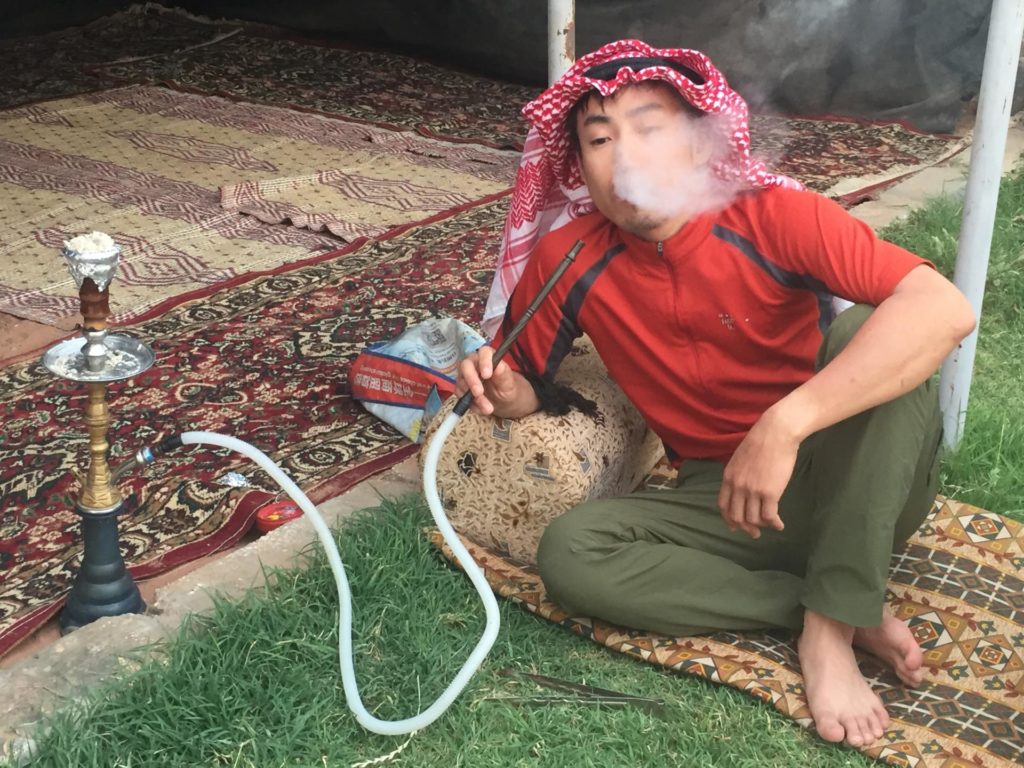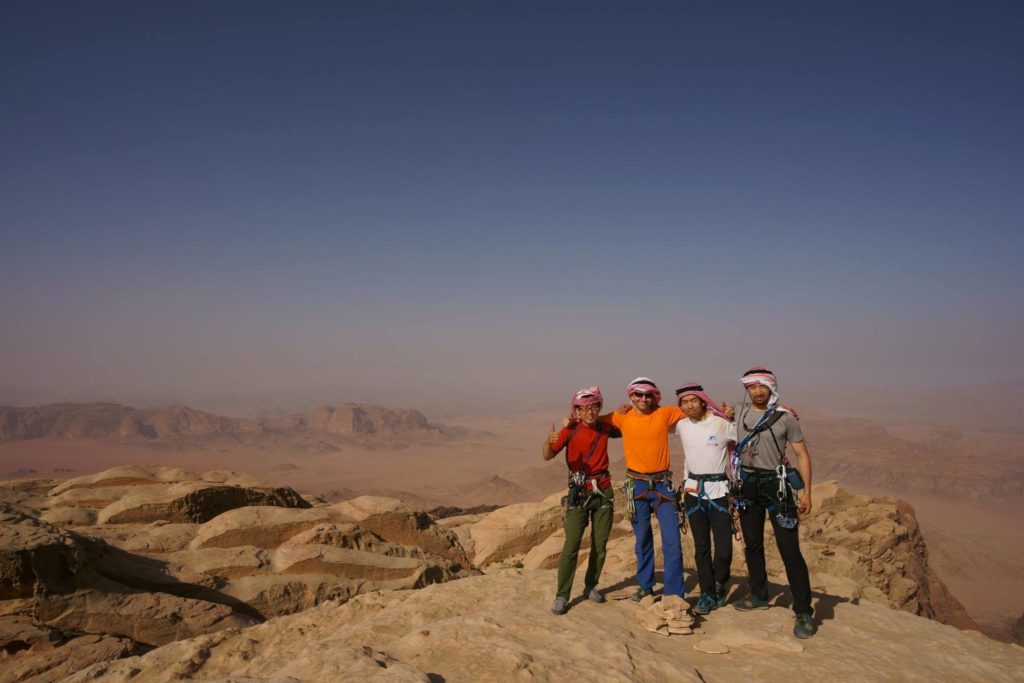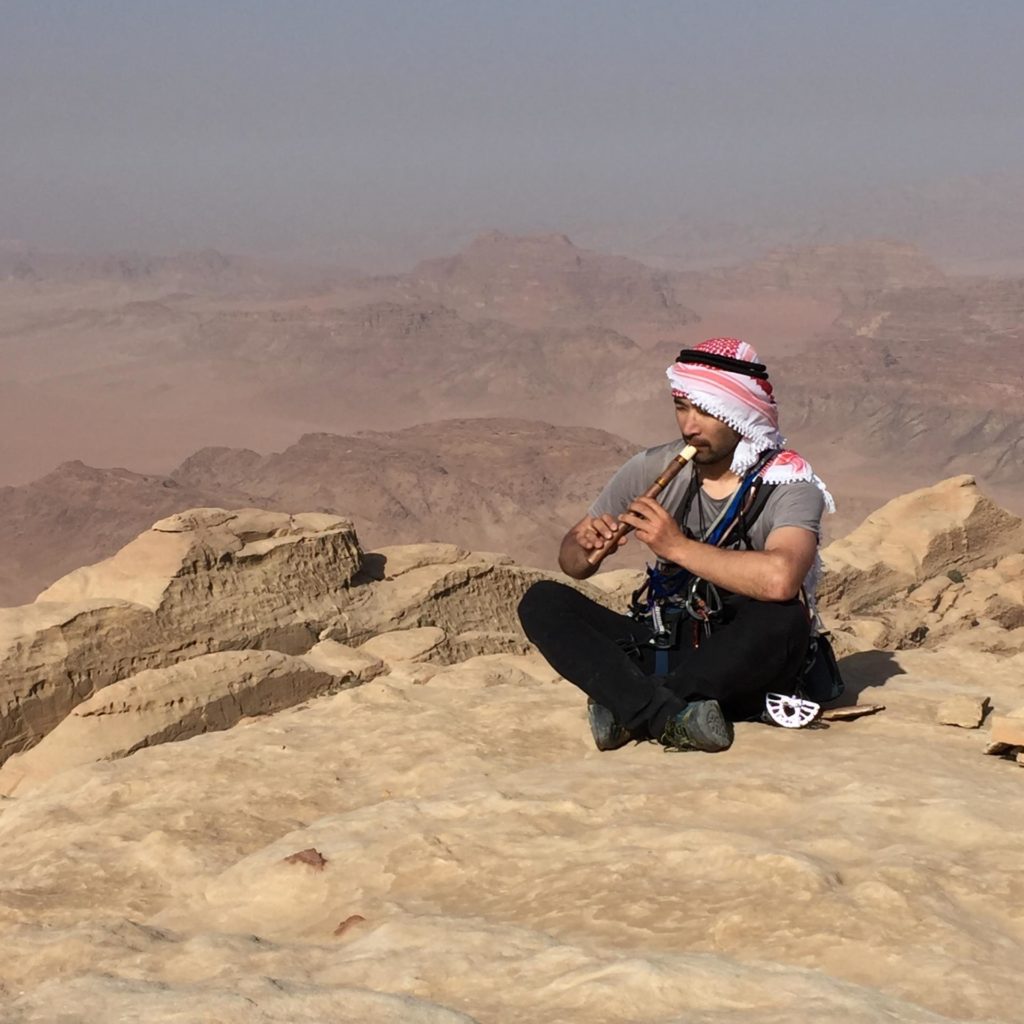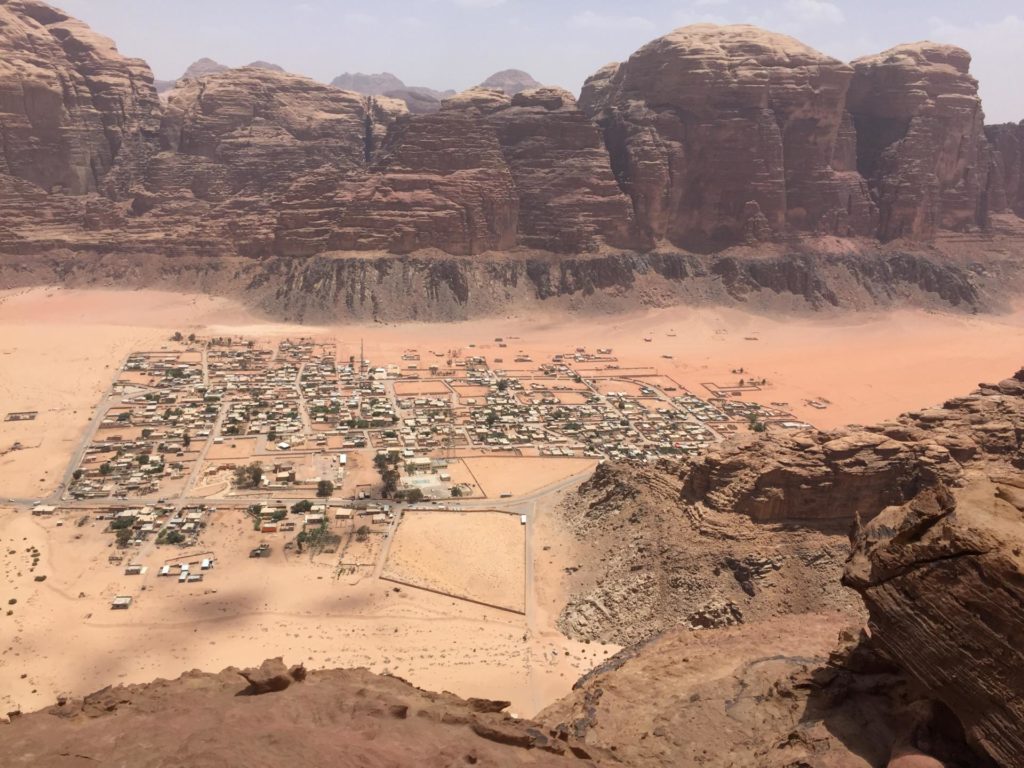“Kanpai! Otsukaresama-desu!” The celebratory beer tastes good as my friends and I toast the start of the holidays and the adventures to come as we await our flight at Haneda Airport. It’s canned beer outside the conbini rather than champagne in the first-class lounge, just the way we like it. After one last tune-up weekend climbing at Ogawayama we’re finally on our way…to Jordan!

Our destination is the Wadi Rum Valley. Our purpose is to climb Jebel Rum and experience the desert sand and rock that captivated T. E. Lawrence in his seminal book “Seven Pillars of Wisdom.” We would bivouac on the summit and dream under the night of a thousand stars.
Fast forward through two flights to Amman, a 7-hour bus ride to the legendary Red Sea port of Aqaba, and a two-hour taxi ride. The driver is engrossed in the Quran on the radio as we transition from Earth to Mars. The yellow sands bleed into orange then red and as we pull into the Wadi Rum Visitors Center the Seven Pillars rise from the desert floor opposite us.
Rum Village is waking up as our taxi drops us in a street shared by camels, old cars on and stray dogs. We are quickly taken under the wing of Shaker, a well-regarded local Bedouin man who guides us back to his family home, shows us to his visitors’ room and then leaves us with the promise of dinner with his family the following evening.

A quick repack and we set out to begin our climb. Jebel Rum (1,734m) makes up one entire side of the Rum Valley. Think about that: a three-mile-long vertical wall topped by a complex plateau of slabs and crevasses, a rabbit warren of false starts and dead ends and somewhere up there, about 1,200 meters above the valley floor, is a summit area the size of a Tokyo bedroom!
Route finding can be a nightmare, but over the centuries the Bedouin have found ingenious ways to the top. These Bedouin routes take lines of least resistance, gossamer paths that barely exist up vertical sand and choss. We are here to try the most famous of them—Hammad’s Road.
It’s a classic adventure route involving hours of soloing up unprotected slabs above mind-numbing exposure, as well as roped climbing up to 5.9 on natural protection. With a bivouac on the summit plateau, it is undoubtedly one of the world’s great mountain experiences.
As we cast off onto the initial ridge we’re already aware of the heat. The sun is directly over us; there’s nowhere to escape to. With four liters of water in our packs, as well as a 50-meter rope each and bivouac gear, it’s hard work. Several hours of exposed scrambling brings us to the first roped climbing, two pitches up a chimney that splits the huge wall at the top of the ridge. This brings us to the Great Siq, an enormous canyon that bisects the Jebel Rum massif from north to south.
We follow the Siq through constrictions and over rock steps until we reach a dead end. From here two unlikely pitches of 5.9 off-width climbing take us up the Siq’s eastern wall, cursing our backpacks in the final chimney. After an unholy struggle, we emerge onto the slab domes of the summit plateau.
The summit is a long way off still, and some hours later we realize we have lost the route. The sun is setting, so we call a halt for the night and find a flat space to bivouac. Oh, to relive that night…the wind, sand and stars that once inspired Antoine de Saint-Exupéry.
Dawn arrives and two abseils from dubious anchors get us onto a ridge of slab that wafts us all the way to the summit ridge. One final pitch and we’re there, a long-held dream realized! The views are life changing, and we linger up there, thankful to be sharing this moment together.
On the way down we can see where we went wrong. But it’s okay, we found our own path. The descent is arduous and we are dehydrated. In one magical moment we stop to rest, with Rum Village spread out below us like Mos Eisley on the planet Tatooine.
Suddenly the muezzin’s call to prayer from the village mosque starts up, and we are mesmerized.
Countless abseils, hours of unprotected down climbing above the void, and eventually we step off the ridge onto flat ground again. We’re in no hurry now, so we detour to rehydrate at Lawrence’s Spring, a natural oasis where T. E. Lawrence himself used to drink and bathe after toiling in the desert.
We are tired and hungry, but it’s already been the experience of a lifetime, and our time in the desert has only just begun…

Travel Tips
Know Before You Go
- Bordering Syria and Iraq to the north, you’d be forgiven for worrying about the safety of a trip to Jordan. But the truth is Jordan is one of the friendliest and most welcome places on Earth. We never felt any hint of danger. As with any travel abroad, it pays to respect the local culture and customs. Jordan has a vibrant and sophisticated culture and the Bedouin of Wadi Rum are famous for their hospitality.
- If you visit Wadi Rum, consider staying with a Bedouin family. I strongly recommend Shaker Al Zalabeh of Wadi Rum Trails. He is a true gentleman and can take care of all aspects of your trip for you. Meals are taken with his wonderful family in the Bedouin tradition and his wife’s cooking is out of this world!
Things To Do
- Take a tour of the local Wadi Rum desert attractions. Ride a camel and spend the night in a Bedouin desert camp. You’ll never forget it!
- Sample some wonderful Arabic cuisine; be sure not to miss the Jordanian delicacy of mansaf (rice, yogurt and lamb).
- Walk through history at the ancient Nabataen city of Petra.








